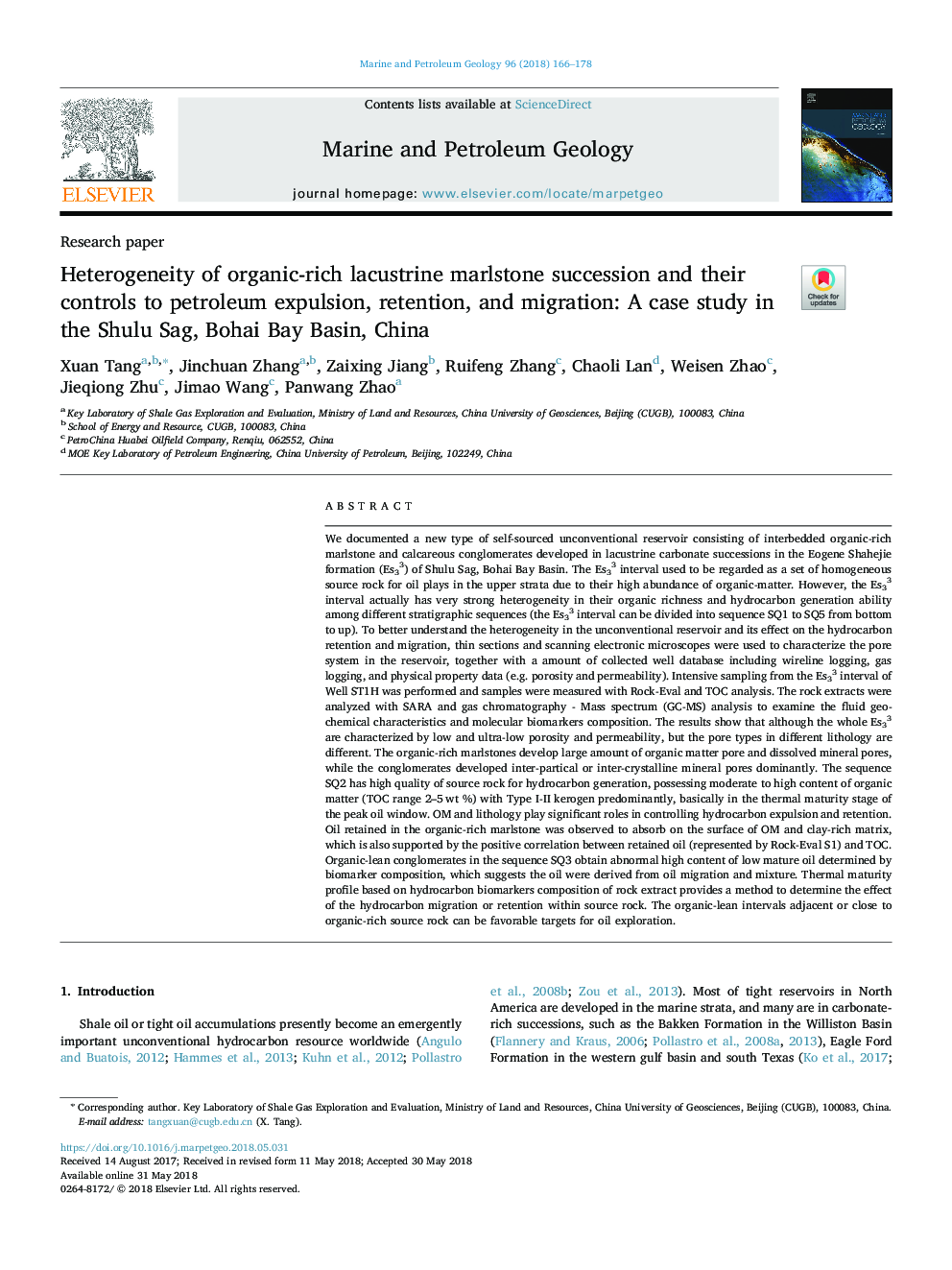| Article ID | Journal | Published Year | Pages | File Type |
|---|---|---|---|---|
| 8908976 | Marine and Petroleum Geology | 2018 | 13 Pages |
Abstract
We documented a new type of self-sourced unconventional reservoir consisting of interbedded organic-rich marlstone and calcareous conglomerates developed in lacustrine carbonate successions in the Eogene Shahejie formation (Es33) of Shulu Sag, Bohai Bay Basin. The Es33 interval used to be regarded as a set of homogeneous source rock for oil plays in the upper strata due to their high abundance of organic-matter. However, the Es33 interval actually has very strong heterogeneity in their organic richness and hydrocarbon generation ability among different stratigraphic sequences (the Es33 interval can be divided into sequence SQ1 to SQ5 from bottom to up). To better understand the heterogeneity in the unconventional reservoir and its effect on the hydrocarbon retention and migration, thin sections and scanning electronic microscopes were used to characterize the pore system in the reservoir, together with a amount of collected well database including wireline logging, gas logging, and physical property data (e.g. porosity and permeability). Intensive sampling from the Es33 interval of Well ST1H was performed and samples were measured with Rock-Eval and TOC analysis. The rock extracts were analyzed with SARA and gas chromatography - Mass spectrum (GC-MS) analysis to examine the fluid geochemical characteristics and molecular biomarkers composition. The results show that although the whole Es33 are characterized by low and ultra-low porosity and permeability, but the pore types in different lithology are different. The organic-rich marlstones develop large amount of organic matter pore and dissolved mineral pores, while the conglomerates developed inter-partical or inter-crystalline mineral pores dominantly. The sequence SQ2 has high quality of source rock for hydrocarbon generation, possessing moderate to high content of organic matter (TOC range 2-5â¯wt %) with Type I-II kerogen predominantly, basically in the thermal maturity stage of the peak oil window. OM and lithology play significant roles in controlling hydrocarbon expulsion and retention. Oil retained in the organic-rich marlstone was observed to absorb on the surface of OM and clay-rich matrix, which is also supported by the positive correlation between retained oil (represented by Rock-Eval S1) and TOC. Organic-lean conglomerates in the sequence SQ3 obtain abnormal high content of low mature oil determined by biomarker composition, which suggests the oil were derived from oil migration and mixture. Thermal maturity profile based on hydrocarbon biomarkers composition of rock extract provides a method to determine the effect of the hydrocarbon migration or retention within source rock. The organic-lean intervals adjacent or close to organic-rich source rock can be favorable targets for oil exploration.
Related Topics
Physical Sciences and Engineering
Earth and Planetary Sciences
Economic Geology
Authors
Xuan Tang, Jinchuan Zhang, Zaixing Jiang, Ruifeng Zhang, Chaoli Lan, Weisen Zhao, Jieqiong Zhu, Jimao Wang, Panwang Zhao,
